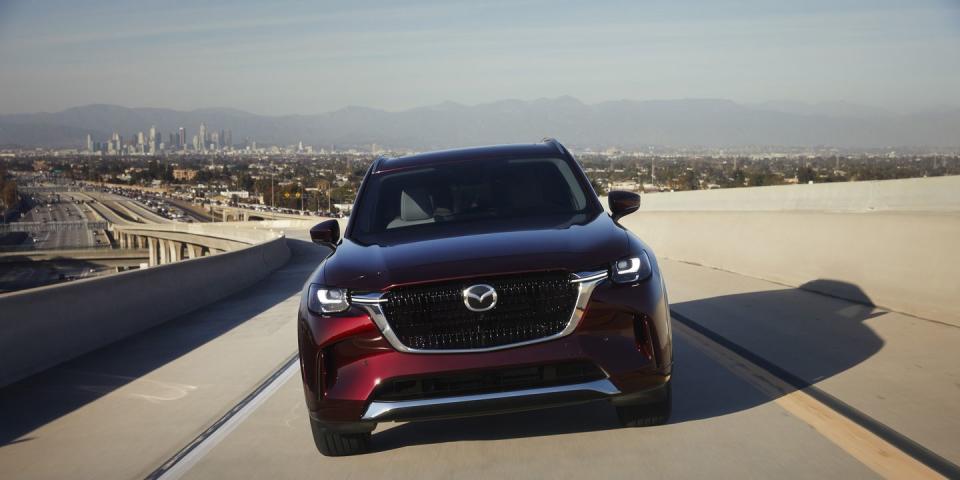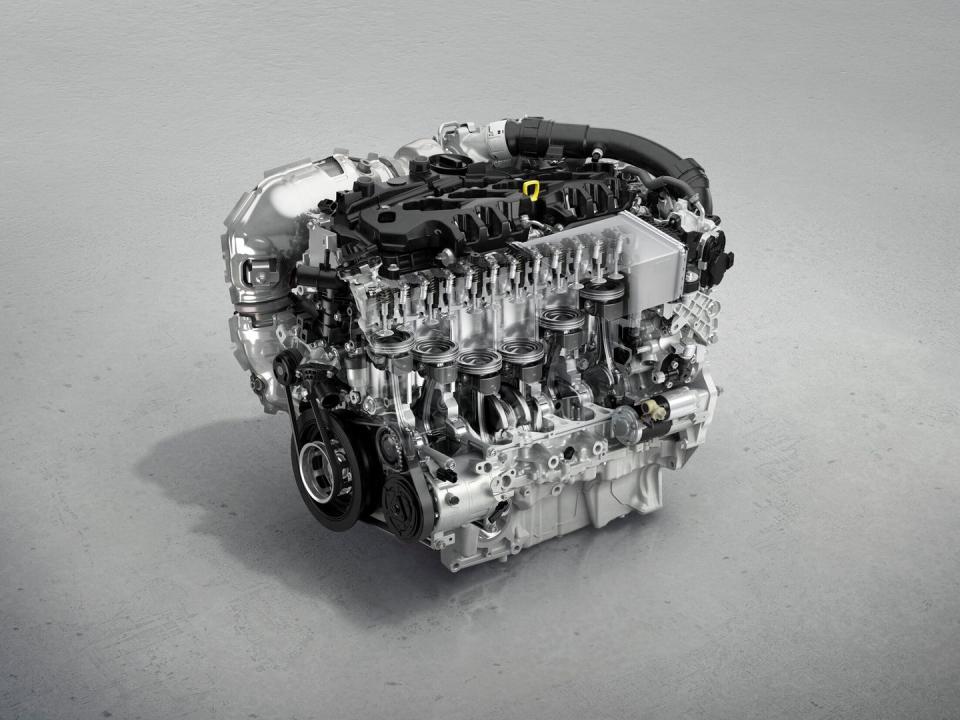Why Mazda's CX-90 Had to Have an Inline-Six

From the June 2023 issue of Car and Driver.
When Mazda's CX-90 mid-size SUV broke cover earlier this year, behind its smile of a grille was an all-new turbocharged inline six-cylinder gasoline engine. The decision to design and build an all-new gas engine is a complicated and costly one for any carmaker, and not without risk. That's especially so for a small manufacturer like Mazda, and doubly so at this point in time, as one car company after another announces that they'll be phasing out internal-combustion powerplants in the coming years on the way to an all-electric future.

Mazda could have powered its new SUV with a turbocharged four-cylinder; it currently offers a 2.5-liter turbo-four in several models and employs a version of that engine in the CX-90 PHEV. But the company decided that nothing other than a gasoline six would do for the rest of the line, and the new engine had to have its cylinders arranged in a row rather than a V.
Why? Because Mazda has been pushing hard in recent years to nudge its brand upmarket, and premium brands including BMW, Mercedes-Benz, Land Rover, and Jeep all have inline-sixes in their lineups. The CX-90 is the company's flagship, we were told, a statement that Mazda wants to be taken seriously by buyers considering upscale brands.
Designed around a Six
The choice of an inline-six was an integral part of the new SUV's design from the outset. Mazda reasoned that its SUV flagship needed to be on an-all new rear-drive platform to compete. (Rumor has it that a sedan will be built on this architecture as well.) Going rear-drive would enable a long dash-to-axle ratio—the distance from the dashboard to the front axle—that gives premium vehicles their more elegant rear-drive proportions. The new platform also enabled the CX-90's engine to be located longitudinally rather than transversely, as it would have been in a front-drive configuration.

 Yahoo Autos
Yahoo Autos 